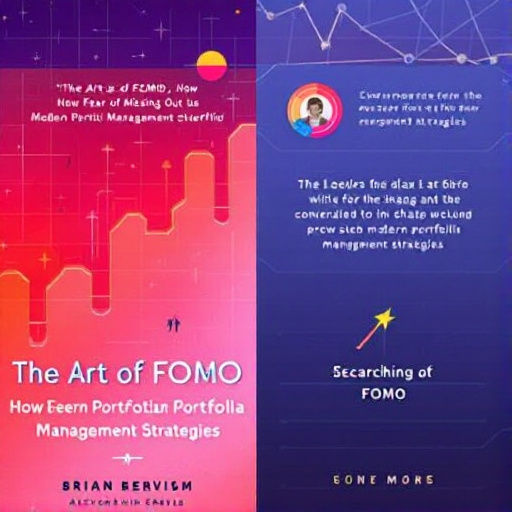Featured Articles
- “Beneath the Surface: How Behavioral Finance Secrets Can Transform Your Portfolio Management Strategy”
- "Blind Spots in Portfolio Management: Unveiling the Impact of Psychological Bias on Investment Decisions"
- Navigating the Dark Side: The Ethics of AI in Portfolio Management and Its Impact on Investment Strategies
- "Reimagining Portfolio Management: How Gamification Could Transform Investment Strategies for the Next Generation"
- The Art of FOMO: How Fear of Missing Out Shapes Modern Portfolio Management Strategies
Unlocking the Unknown: How Gamification is Shaping the Future of Portfolio Management
Unlocking the Unknown: How Gamification is Shaping the Future of Portfolio Management
Gamification is revolutionizing portfolio management by transforming how individuals engage with their investments, making the process more interactive and enjoyable. Through innovative strategies and technologies, financial professionals and investors alike can now gain deeper insights into their portfolios while enjoying the ride.
The Rise of Gamification in Finance
Traditionally, finance and investing have been seen as serious business, often associated with stress and complexity. However, as younger generations enter the investment arena, a creative revolution has begun. Gamification, the application of game design elements in non-game contexts, has emerged as a powerful tool to reshape portfolio management.
What is Gamification?
Gamification involves using game-like features—like points, badges, and leaderboards—to engage users and foster motivation toward achieving goals. According to a report by MarketsandMarkets, the global gamification market is projected to reach $30.7 billion by 2025, highlighting its growing significance across various sectors, including finance.
Why Gamification Works
One of the primary reasons gamification is effective is that it leverages the innate human desire for competition and achievement. When investors can track their progress and earn rewards, they are more likely to stay engaged and committed to their financial goals. A study by the Stanford Graduate School of Business found that gamifying investment engagement can lead to a significant increase in participation rates.
Delving Deeper: How Gamification Transforms Portfolio Management
Let's explore how gamification is reshaping the future of portfolio management. By breaking down the process into smaller, manageable challenges, investors become more motivated to stay involved and informed. Imagine receiving points for every milestone you achieve, whether it's hitting a savings goal or diversifying your portfolio.
Case Study: Acorns
Acorns, a micro-investing app, exemplifies the success of gamification in finance. With features like 'Round-Ups'—which invest spare change from everyday purchases—Acorns encourages users to invest passively. Users receive notifications about their investment progress, akin to leveling up in a game, which fosters satisfaction and a sense of achievement.
The Power of Community
Community features are becoming increasingly important in gamified portfolio management. Platforms like eToro leverage social trading, allowing users to follow and copy successful investors. This not only fosters a sense of belonging but also motivates individuals to improve their strategies through competition and collaboration. A 2021 survey found that 72% of retail investors feel more engaged with their investments when part of a community.
Bridging the Knowledge Gap
The world of finance can often feel intimidating, especially for younger investors who may lack experience. Gamification helps bridge this knowledge gap by turning complex financial concepts into fun challenges. For instance, educational apps might reward users for completing interactive lessons about asset allocation or risk management, making learning enjoyable.
Statistics That Matter
Statistics bolster the argument for gamification’s potential. According to the National Endowment for Financial Education, only 17% of high school students could answer basic financial literacy questions correctly. Gamification has the power to improve these numbers by actively engaging young minds and instilling essential financial knowledge early on.
The Role of Technology
Technological advancements play a critical role in the efficacy of gamified solutions in portfolio management. From intuitive apps to augmented reality, technology enhances user experience and interaction. For example, imagine using virtual reality to visualize your investment’s performance over time, creating a more immersive experience that could lead to better financial decisions.
Challenges of Gamification in Finance
Despite the numerous benefits, gamification in portfolio management isn't without its challenges. One major concern is that it can lead to risky behavior, as users might become overly focused on short-term rewards rather than long-term goals. A study published in the Journal of Behavioral Finance found that gamified elements could induce excessive trading—a behavior typically discouraged by financial advisors.
Balancing Fun and Responsibility
For gamification to be successful, it must strike a balance between engagement and responsible investing. Financial institutions are starting to understand that while it’s essential to captivate audiences, they must also educate users about the possible downsides of impulsive investment decisions. Financial literacy remains a crucial aspect of these gamified experiences.
The Future is Bright
As we look ahead, it is clear that gamification is shaping the future of portfolio management. Young investors are not only responding to this novel approach but are demanding more interactive and rewarding experiences in their financial journeys. For the industry to keep up, investment firms must embrace this trend and continuously innovate.
Conclusion: Embrace the Change
Investing doesn't have to be an arduous journey filled with anxiety and confusion. Gamification presents an opportunity to make portfolio management more relatable, enjoyable, and educational for everyone, regardless of age or investment experience. By tapping into our human instinct to play, compete, and learn, gamification is not just a trend—it's a transformative movement in finance. The question remains: are you ready to play the investment game?
As an emerging writer in my 20s, I’m excited about the future of finance and how gamification can foster a more inclusive and engaging investment landscape. Whether you're 16 or 70, embracing these changes can bring the thrill back into your financial adventure.




